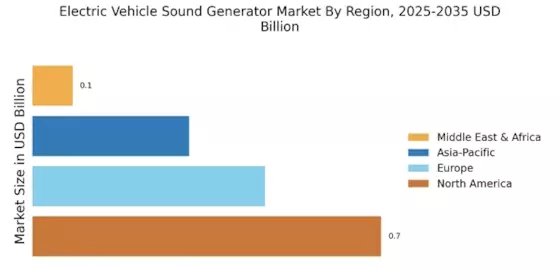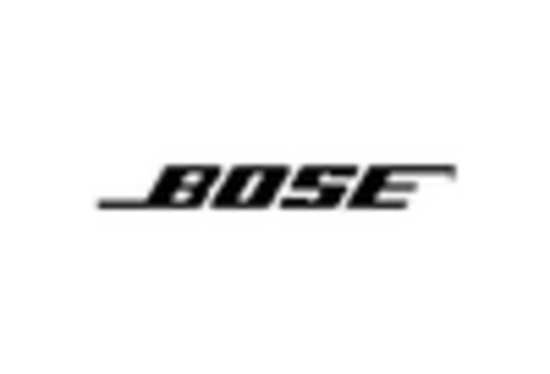Regulatory Influence
The Electric Vehicle Sound Generator Market is significantly shaped by regulatory frameworks that mandate sound generation in electric vehicles. Authorities in various regions have established guidelines to enhance pedestrian safety, particularly in urban environments. For instance, regulations require electric vehicles to emit sounds at low speeds to alert pedestrians of their presence. This regulatory push is expected to drive the demand for sound generators, as manufacturers must comply with these standards. The market is projected to grow as more countries adopt similar regulations, creating a robust environment for sound generator technologies. As of 2025, the market is anticipated to witness a compound annual growth rate of approximately 10%, reflecting the increasing emphasis on safety and compliance in the automotive sector.
Sustainability Trends
Sustainability trends are increasingly influencing the Electric Vehicle Sound Generator Market, as consumers and manufacturers alike prioritize eco-friendly solutions. The shift towards sustainable transportation is prompting the development of sound generators that not only comply with safety regulations but also utilize environmentally friendly materials and technologies. This alignment with sustainability goals is becoming a selling point for electric vehicle manufacturers, as consumers are more inclined to support brands that demonstrate a commitment to environmental responsibility. The market is expected to benefit from this trend, with projections indicating a potential growth of 18% in the adoption of sustainable sound generation technologies over the next five years. This reflects a broader movement towards integrating sustainability into all aspects of automotive design and production.
Customization and Branding
Customization and branding are emerging as key drivers in the Electric Vehicle Sound Generator Market. Manufacturers are increasingly recognizing the importance of unique sound profiles as a means to differentiate their electric vehicles in a competitive market. Custom sounds can enhance brand identity and create a more engaging user experience. This trend is particularly relevant as consumers seek personalized features in their vehicles. The ability to offer bespoke sound options not only appeals to individual preferences but also aligns with the growing demand for unique automotive experiences. As a result, the market for sound generators is likely to see a surge in demand, with estimates suggesting a growth rate of around 12% in the coming years as brands invest in innovative sound solutions.
Technological Advancements
Technological advancements play a pivotal role in the Electric Vehicle Sound Generator Market, as innovations in sound design and generation technology enhance the auditory experience of electric vehicles. The integration of artificial intelligence and machine learning allows for the creation of customizable sound profiles that can be tailored to individual preferences. This not only improves user experience but also opens avenues for branding opportunities for manufacturers. As technology evolves, the sound generator systems are becoming more sophisticated, offering features such as adaptive sound modulation based on vehicle speed and environmental conditions. The market is expected to expand as these technologies become more accessible, with projections indicating a potential increase in market size by 15% over the next five years.
Consumer Awareness and Demand
Consumer awareness regarding the benefits of electric vehicles is steadily increasing, which in turn fuels the Electric Vehicle Sound Generator Market. As more individuals become informed about the advantages of electric mobility, there is a corresponding rise in demand for features that enhance safety and driving experience. Sound generators serve as a crucial element in addressing concerns about the silent operation of electric vehicles, particularly among pedestrians and cyclists. This heightened awareness is likely to lead to increased sales of sound generator systems, as consumers prioritize safety features in their purchasing decisions. Market analysts predict that this trend could result in a 20% increase in sound generator adoption rates over the next few years, reflecting the growing consumer focus on safety and awareness.


















Leave a Comment